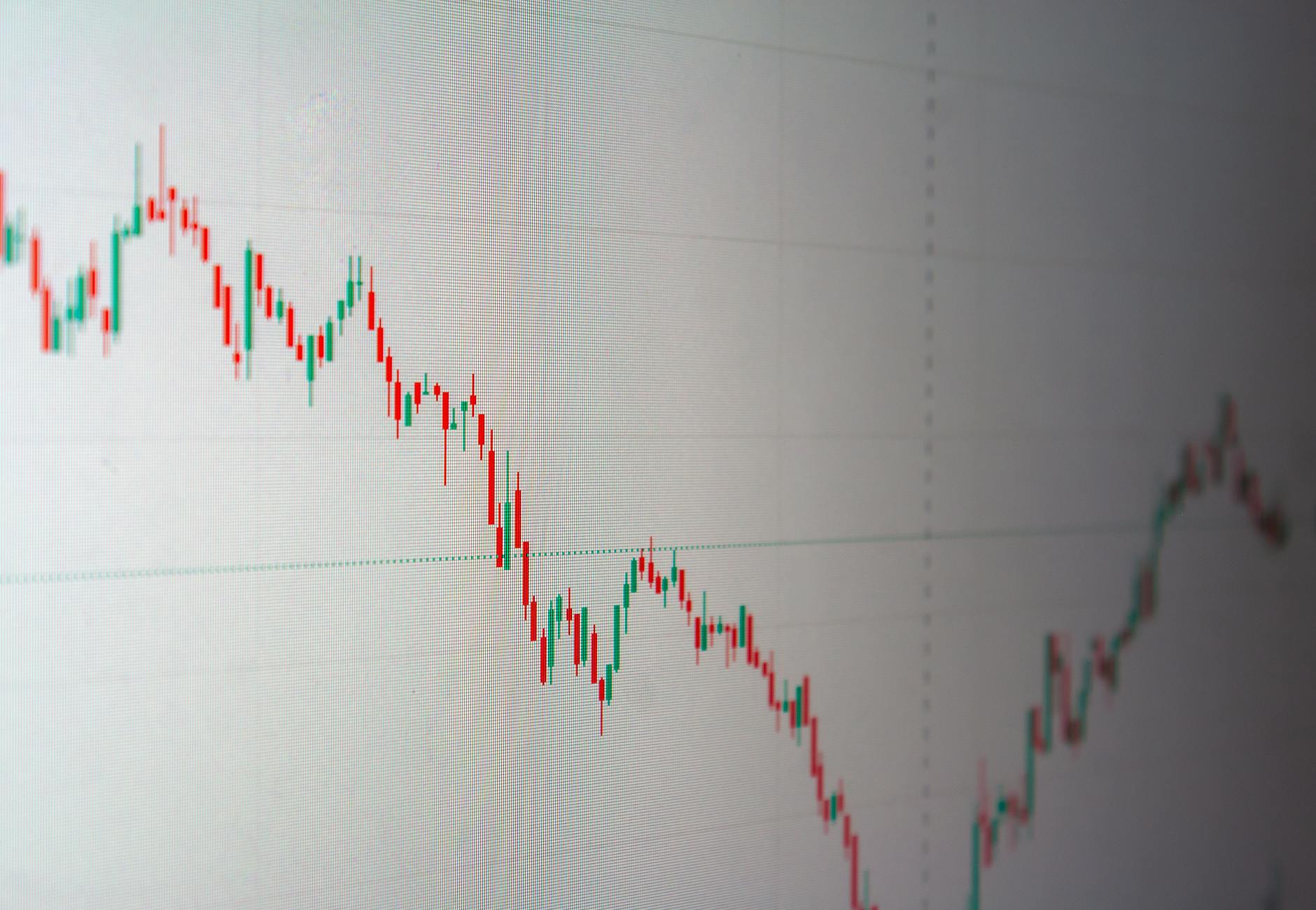Chainlink secures ISO 27001 compliance: First oracle to unlock TradFi demand
- Get link
- X
- Other Apps

Chainlink Achieves Regulatory Milestone: Primed for TradFi Integration
📌 How Chainlink's ISO 27001 and SOC 2 Certifications Strengthen Its Position
⚖️ Chainlink (LINK), the leading decentralized oracle provider, has achieved a significant regulatory milestone by securing both ISO 27001 and SOC 2 compliance.
This makes Chainlink the first oracle platform to attain both certifications, signaling a major enhancement to the protocol's security and reliability.
According to the official announcement, these compliance assessments cover Chainlink Data Feeds—specifically Price Feeds and SmartData, including Proof of Reserve and Net Asset Value (NAV)—as well as the Cross-Chain Interoperability Protocol (CCIP).
💱 These certifications establish a new standard for data and interoperability oracle platforms within the decentralized finance (DeFi) space.
⚖️ Chainlink's dominance in the oracle market is undeniable. The protocol currently secures approximately 68% of the total value secured (TVS) in DeFi, which equates to over $90 billion in assets.
With these new compliance standards in place, Chainlink is positioned for increased adoption from both retail and institutional investors. The certifications should also increase demand for LINK tokens.
🔗 Chainlink’s interoperability standard is also gaining traction among traditional financial institutions and asset issuers, including Swift and UBS, marking a significant step towards bridging traditional finance and blockchain technology.
⚖️ The ISO 27001 certification confirms that Chainlink has established a comprehensive Information Security Management System (ISMS) governing the infrastructure, development, operations, and security of its services.
⚖️ The SOC 2 Type 1 attestation validates that Chainlink has implemented robust security and operational controls, ensuring reliable and compliant oracle services designed to safeguard both the organization and its clients.
📌 Impact of US Crypto Regulations
📜 The timing of these certifications coincides with a significant shift in the US regulatory landscape under President Trump's administration and its pro-crypto vision.
🔗 With the recent passage of key crypto bills like the GENIUS Act and the CLARITY Act, Chainlink is well-positioned to capitalize on the tokenization of real-world assets (RWAs) and the broader adoption of blockchain technology by institutions.
🔗 Market analysis firm Birb Nest emphasizes that no other project offers such a comprehensive suite of services in the crypto market, positioning Chainlink as the essential bridge between traditional finance and blockchain economies.
Major financial institutions such as J.P. Morgan, Mastercard, and Fidelity have publicly acknowledged their collaboration with Chainlink technology, indicating widespread adoption.
⚖️ The firm notes that as institutions increasingly adopt blockchain technology, the demand for secure data, interoperability, compliance, privacy, and integration with legacy systems will continue to grow. Chainlink is uniquely positioned as the only unified and modular platform capable of meeting these needs at scale.
The increased excitement surrounding Chainlink's potential has fueled a nearly 9% surge in the LINK token price over the past week, making it a top performer in the market.
🚀 In contrast, Ethereum (ETH) and Bitcoin (BTC) have experienced losses of 8% and 5%, respectively, during the same period. As of this writing, the LINK token is trading at $25, which is still 52% below its all-time high of $52.
📌 Key Stakeholders' Positions
Several key stakeholders are weighing in on Chainlink's regulatory advancements and their implications for the crypto market.
🔗 Lawmakers: With the passage of pro-crypto legislation in the US, lawmakers are signaling a willingness to embrace blockchain technology and its potential to drive economic growth. This regulatory clarity provides a more favorable environment for projects like Chainlink to thrive.
🔗 Industry Leaders: Financial institutions such as J.P. Morgan, Mastercard, and Fidelity have publicly acknowledged their collaboration with Chainlink, highlighting the growing acceptance of blockchain technology in traditional finance.
⚖️ Crypto Projects: Chainlink's compliance achievements set a new benchmark for other oracle platforms and DeFi projects, emphasizing the importance of security and regulatory adherence in the industry.
Stakeholder Summary
| Stakeholder | Position | Impact on Investors |
|---|---|---|
| Lawmakers | Pro-crypto legislation fosters innovation | 👥 📈 Increased regulatory clarity boosts investor confidence |
| Industry Leaders | Adoption of Chainlink technology | Legitimizes blockchain in traditional finance |
| Crypto Projects | Sets compliance standards | ⚖️ 📈 Increased security and reliability |
📌 Future Outlook for Chainlink
⚖️ The future looks promising for Chainlink, with several potential developments on the horizon.
⚖️ Increased Institutional Adoption: As traditional financial institutions continue to explore blockchain technology, the demand for Chainlink's secure and compliant oracle services is likely to increase.
🔗 Tokenization of RWAs: Chainlink is well-positioned to capitalize on the growing trend of tokenizing real-world assets, providing the necessary infrastructure for bridging traditional finance and blockchain economies.
⚖️ Expansion of Services: Chainlink could expand its suite of services to meet the evolving needs of the DeFi and TradFi sectors, further solidifying its position as the leading oracle provider.
📌 🔑 Key Takeaways
- Chainlink has achieved ISO 27001 and SOC 2 compliance, making it the first oracle platform to achieve both certifications, enhancing its security standards.
- The compliance assessments cover Chainlink Data Feeds and the Cross-Chain Interoperability Protocol (CCIP), setting a new benchmark for data and interoperability oracle platforms.
- Chainlink's interoperability standard is gaining traction among traditional financial institutions and asset issuers, marking a significant step towards bridging traditional finance and blockchain technology.
- With the recent passage of key crypto bills in the US, Chainlink is well-positioned to capitalize on the tokenization of real-world assets (RWAs) and the adoption of blockchain technology by institutions.
- LINK has been the top performer of the market with a nearly 9% surge on the weekly time frame, trading at $25, 52% below its all-time high of $52.
Chainlink's recent compliance achievements are more than just regulatory checkboxes; they're a strategic move that unlocks significant potential for institutional integration. I predict we'll see a surge in institutional investment flowing into Chainlink-integrated DeFi projects in the next 6-12 months, potentially pushing LINK's price back towards its all-time high and beyond. This hinges on the continued stability of the broader crypto market and the persistent demand for reliable, secure data feeds in the rapidly evolving RWA space, but the groundwork is now firmly in place.
- Track the total value secured (TVS) by Chainlink in DeFi to gauge its growing market dominance and real-world utility.
- Research DeFi projects and protocols that have integrated Chainlink's data feeds and CCIP to identify potential investment opportunities.
- Monitor regulatory developments in the US and other jurisdictions to assess the impact on Chainlink's growth prospects and expansion plans.
- Consider setting price alerts for LINK to capitalize on potential price movements driven by increased institutional adoption and positive market sentiment.
— Janet Yellen
Crypto Market Pulse
August 22, 2025, 06:10 UTC
Data from CoinGecko
| Date | Price (USD) | Change |
|---|---|---|
| 8/16/2025 | $21.75 | +0.00% |
| 8/17/2025 | $22.66 | +4.20% |
| 8/18/2025 | $25.68 | +18.08% |
| 8/19/2025 | $25.75 | +18.39% |
| 8/20/2025 | $23.52 | +8.14% |
| 8/21/2025 | $26.41 | +21.45% |
| 8/22/2025 | $24.77 | +13.89% |
▲ This analysis shows CHAINLINK's price performance over time.
This post builds upon insights from the original news article, offering additional context and analysis. For more details, you can access the original article here.

